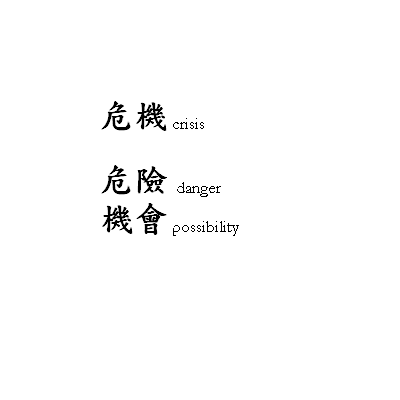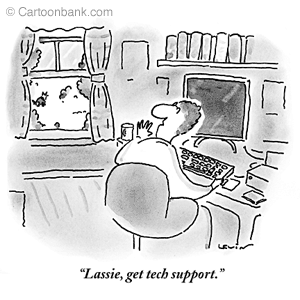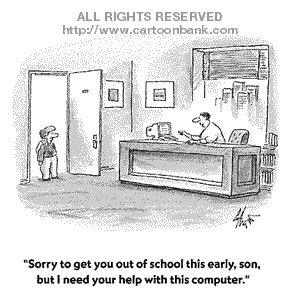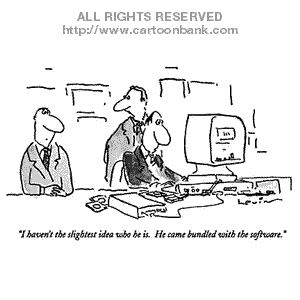CAIS
Technology Conference, June 23, 2005: Digital Storytelling Workshop. Presented by Bill Sullivan
Workshop Description: This hands-on workshop introduces
the skills necessary to integrate digital storytelling into any classroom. We
will explore techniques for helping students discover the story, and appreciate
the process by organizing a storyboard (outline of a movie). Participants will
then create their own text and storyboard. After recording and editing digital
stories, we will then walk through the software steps and blossom the story
text into a digital movie. Throughout the process, we will also reflect on classroom
management methods to keep students focused and allow the process of filming,
editing, and creating personal projects naturally absorb them. By the end of
the day, participants will leave with their own story produced during the workshop.
Click here for a Word copy of the welcoming
one page handout
return to top
Outline of the Workshop:
Morning Session:
a) General introduction; view examples of digital stories; discuss the Seven
Elements of the digital story, according to the Center for Digital Storytelling;
b) Reflect on the mindset that will help technology projects in a classroom setting; complement this discussion with some explicit classroom methods and classroom atmosphere goals.
c) Brainstorming, using prompts, writing and putting the story through the storyboard process;
d) Recording Voice Over and gathering still images.
Afternoon Session:
e) Producing digital project in the I-Movie Timeline; using the Palette to blend
audio, additional digital files, transitions, and special effects;
f) Showing the projects and being mindful of future classroom management methods;
g) Review the process and discuss the possibilities. return
to top
NB: Although not a requirement, it may be more meaningful
for participants to bring along a draft of a story (one typed page in length),
favorite CDs for soundtrack, meaningful digital photos, possibly some digital
movie clips, or other multimedia files. We will also provide and explore story
prompts to inspire spontaneous development.
return to top
Some digital samples from my students from the 2004-05 year:
Prompts for today's workshop:
- Poetry: find a favorite poem and create a digital story. Click here for the Academy of American Poets. http://www.poets.org
- Download the latest version of the essay prompts on the Common Application page: http://www.commonapp.org/
- Write about your personal mythology. Write about a childhood activity where you were so engrossed in the play that you did not notice time passing. You could also excavate an early memory from your childhood--perhaps a moment of which you were too young to remember--that family members tell and retell. What is that story? Why is it so important for you?
- During our spring term, my classes wrote essays for the essay contest, This I Believe; it is a recurring program on National Public Radio's Morning Edition. Because the contest asks Americans to reflect on their core beliefs, sharing these core values became another way to build better relationships among the students in my classroom.
return to top
Adjusting Students' (and adults') Mindsets When Using Technology
in the Classroom |

|
 |
Adjusting Mindsets; explain and discuss:
- Reflect on Robert Brook's insights on crisis, danger and possibility (celebrate the Chinese characters); the etymology of resilience;
- revive the buddy system (we're working together on a community class work versus competition for individual grades;
- utilize the driver (have students take turns using the lead computer that is attached to the projector and have them voice out loud their problem solving steps);
- appreciate the good, old advice of relying on intuition for previous the "innovative" technology of mechanical flight: flying by the seat of one's pants;
- realize the environments that you already know before you learn a new system/software; in other words, what types of learning will you have to do: relearning? upgrading? unlearning?
- join the circle and allow these projects to become naturally student-centered work projects where the teacher can also engage students
to help create the criteria for assessment since technology assignments defy normal
grading standards: David Warlick (our Keynote speaker) has a create your own rubric on his page. Here's an interesting resource, Midlink Magazine, with examples of examples of student rubrics. Here's one from the San Mateo County Project-Based Learning page. Have your students either create individual rubrics per assignments or research other options.
- these projects allow me to role model my love for learning because there is a good chance that students
know more than me in various technology topics;
- can anyone share additional classroom methods to create classroom community and partnerships?
return to top
Classroom Management:
return to top
Seven Elements of a Digital Storytelling
The Center for Digital Storytelling set an interesting criteria that incorporates
the aspects of multimedia. Because multimedia presents so many different ways
to present a story, as useful guideline such as this one will help channel and
focus students' energies and ambitions.
They have synthesized these seven elements as a way to channel diverse backgrounds
and approach the digital storytelling process with a good general guideline.
I have had students make I-movies, and I will now begin criteria conversations
with these seven elements. The fun begins when you open the floor to students
to create the class standards before the project begins.
In the interest of time and convenience, click
here for a boiled down version of CDS' seven elements:
- Point of View
- Dramatic Question
- Emotional Content
- Gift of Your Voice
- Power of Soundtrack
- Economy
- Pacing
Brainstorming and Outlining a Digital Story
Click here for a great storyboard outline (pdf file)
designed by John Lambert.
return to top
Directions for I-Movie. Before we begin,
it is good to sit back and evaluate some I-Movie skills and techniques that you
probably already possess. We will be operating moves in a click and drag environment.
We will also be working with the Palette and Timeline,
so it is important that you understand those features as well as the concepts
of importing (images, sound, etc) and Sharing
(sometimes referred to as export in previous versions of I-Movie).
return to top
NB Links and Ideas to prompt reflections and
conversations:
General discussion on incorporating technology in a meaningful way; how do these cartoons illuminate insights from Monday night's Keynote's presentation?
General Discussion on Digital Storytelling:
Other Multimedia Links:
return to top
Search Tips: try these links on the web
to gather multimedia images, files, etc, for your digital story:
return to top
Copyright Information:
return to top
Great Source: I began collecting much of the
above information from John Lambert, Dana Atchley, Nina Mullen, The
Center for Digital Storytelling: They have a great web page in which
they present the fundamental steps with the metaphor of a cookbook
and display a great movie
example as a type of recipe as a goal for the showing the multimedia potentials. This center and subsequent Digital Storytelling Association has been at the core of the digital movement for some time.
Bill Sullivan; last updated June 20, 2005 return to top




